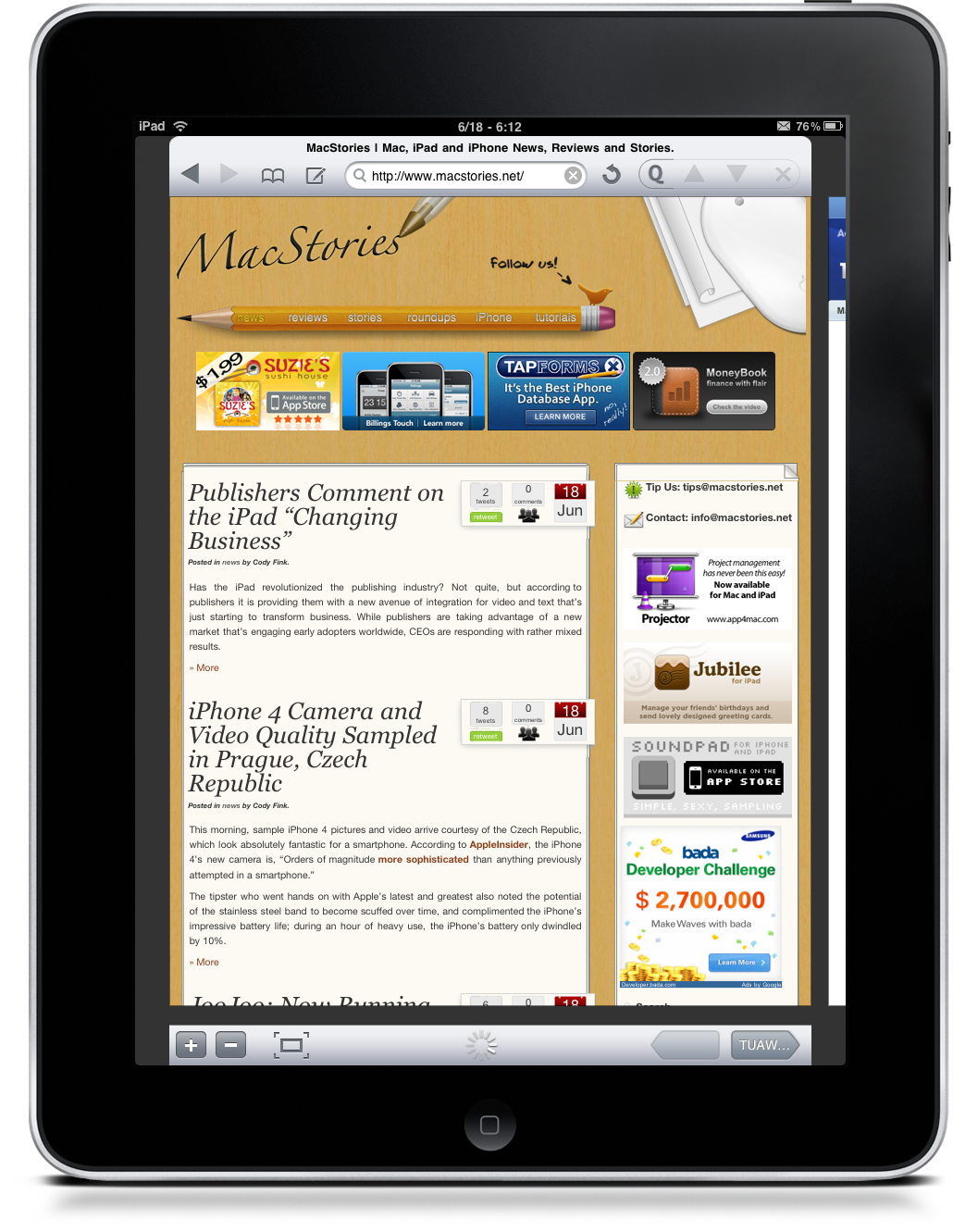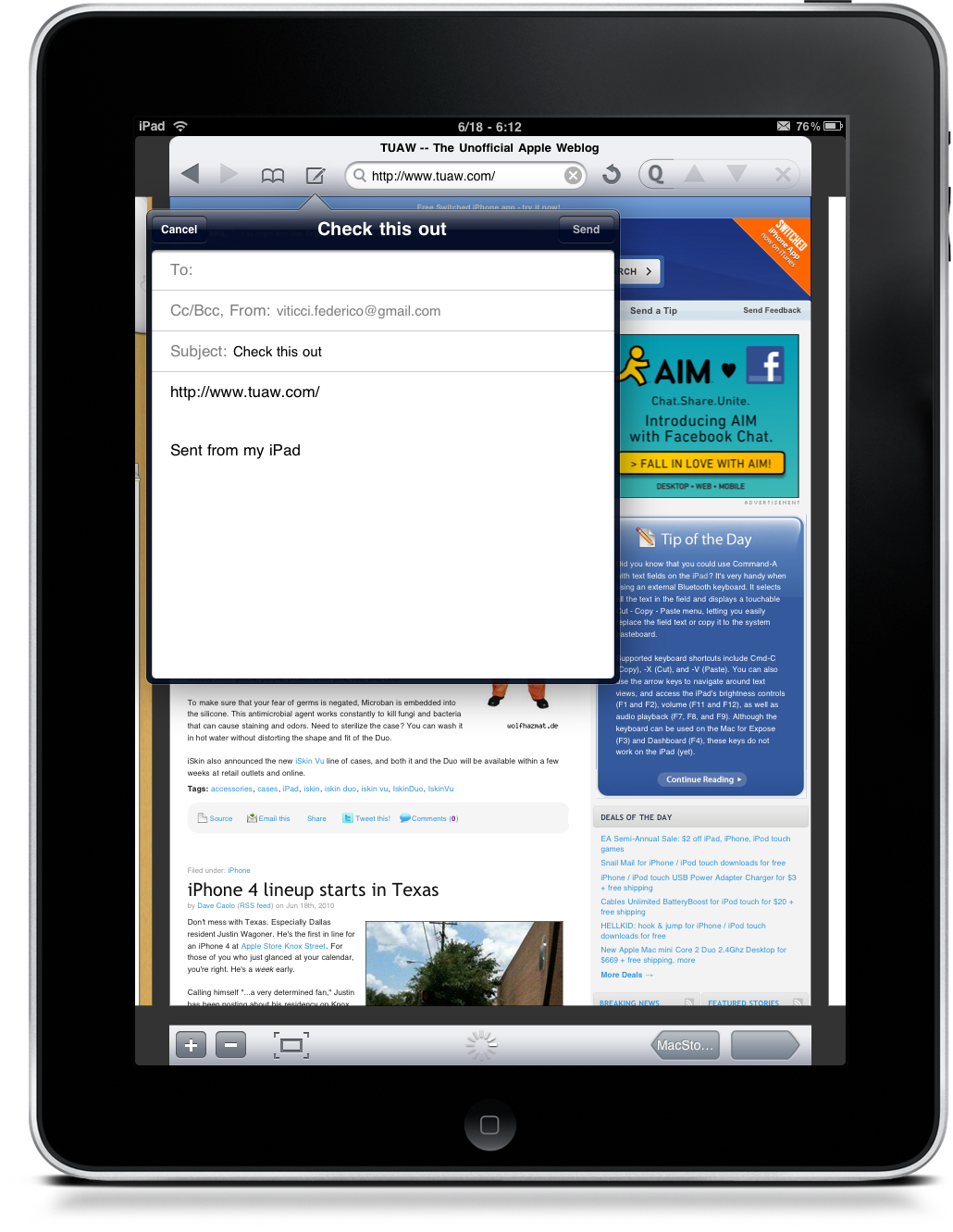So many developers have tried to build alternative browsers for the iPhone on top of Webkit. See, Apple gives you the tools to create your own customized browser, and I’m not blaming them for the attempt. I’m blaming them for the experience they failed to achieve, developing alternatives just for the sake of it. And people, the average App Store users, seem to appreciate this trend, perhaps because they’re willing to accept every single alternative some devs give them. Look at the success of Opera Mini for iPhone, and look at how bad it is when you compare it to Apple’s MobileSafari.
What I’m trying to say is, you don’t mess with MobileSafari. Sure you can try to add thousands of features, and you can also promote your app by saying that it does whatever MobileSafari doesn’t. Seriously, it’s fine. But you can’t really think someone won’t notice and eventually talk about your crap. That’s why we usually avoid to talk about these “alternative browsers” on MacStories.
Developers are now realizing that, with 2 million iPads out there, the tablet might indeed be a profitable market for “alternatives”. I won’t go into all the details, but just so you know - this thing has been the top paid iPad app for days. Is it possible to develop a decent alternative to Safari for iPad?
Let’s look for the answer in Life.
The only browser app for iPad we’ve reviewed here is Multitasking Browser, and it’s pretty good. Life Web Browser tries a different approach, and it does so by telling us that we don’t need tabs and pages, we need to swipe.
Aseid Ghaffari and his team discovered that users don’t find Safari’s behavior with new links exactly comfortable. Apple’s Safari forces you to go back and forth between a dashboard with thumbnails of pages, and another take on the subject such as iCab’s desktop-like tabs didn’t impress Ghaffari either. If it’s not about copying the desktop and it’s not about changing pages, then it definitely must be about gestures - the developers thought. So there you have it, you horizontally swipe between “windows”.
They’re not actual windows. Think of them as webpages that slide under a fixed browser chrome. It’s up to you, with a horizontal swipe, to make web pages slide and keep browsing. If you think about it, and it you take a look at the video (embedded below), it’s pretty cool.
With two open pages it is cool: you swipe, no need to tap around, everything just works. Problem is, the app didn’t handle my browsing session quite right: with 7/8 pages running, it started to feel laggy, slow and unresponsive. As I kept swiping to change websites, some pages went back to a blank state as if the app didn’t previously load them, which is very annoying. Some just froze, and I had to close them and open again. On top of this, the application doesn’t support saved state, so go figure.
What’s good about Life browser is that it loads side-pages in the background. If you have a fast wifi connection, it almost feels like there are no load times at all. Too bad bugs are there to remind us it ain’t so. Another nice thing about Life is the “queue” feature: by tapping a Q button in the toolbar you can send links to pages in the background, so you can check them out later. To access the queue, you have to tap on up / down arrows in the toolbar. It’s an interesting feature, but then again I found it slow and buggy sometimes. It shows good room for improvement though.
Of all the alternative browsers I’ve tried, Life Web Browser is one of the most promising. I mean the idea is good, but it has to be refined a lot. The interface needs more polish, the browser itself needs more stability and speed improvements. But like I said, the concept is good. Here’s to hoping good charts won’t make the developers think only about the money.
Available at $1.99 in the App Store.




